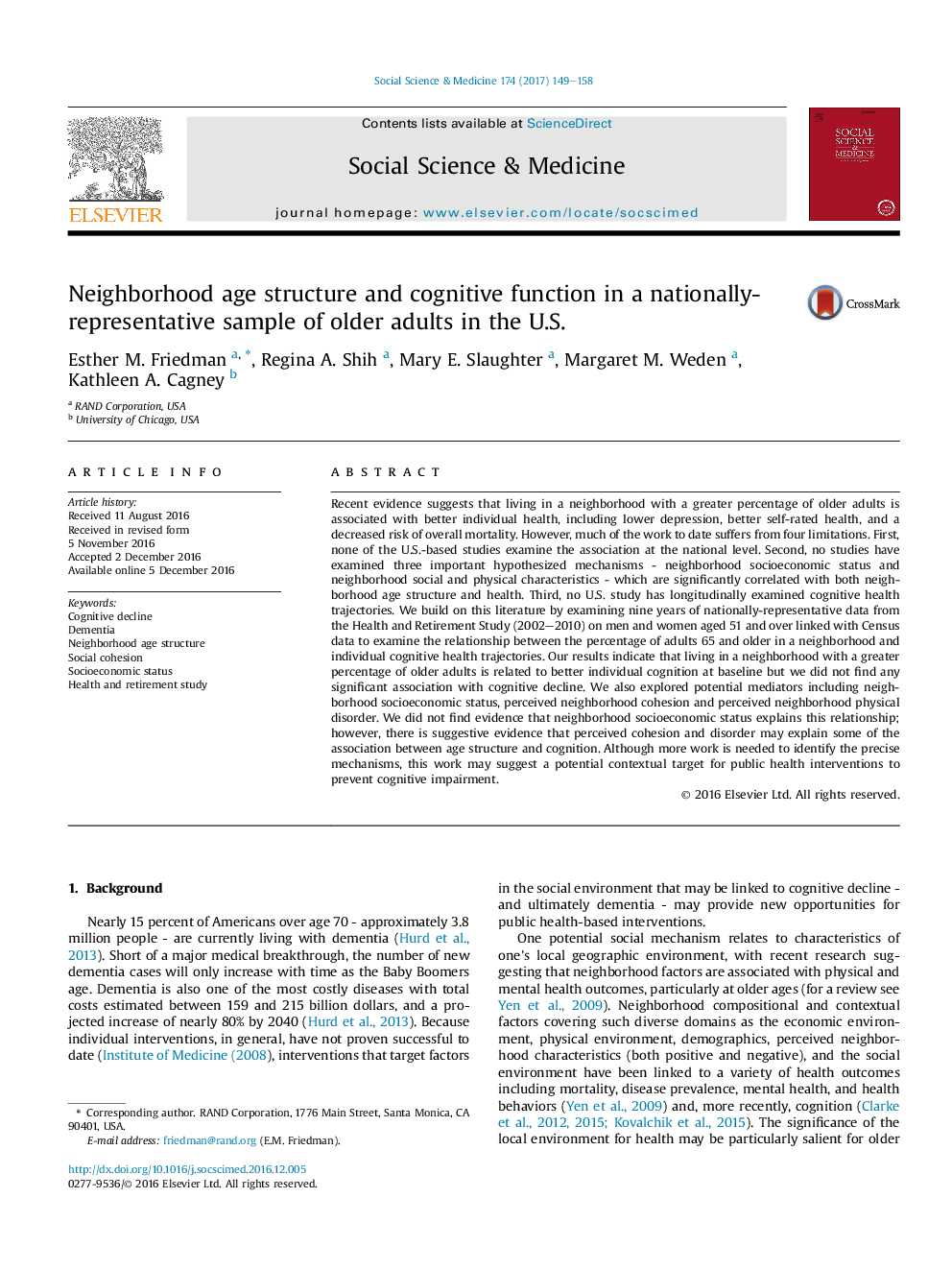ترجمه فارسی عنوان مقاله
ساختار سنی همسایش و عملکرد شناختی در نمونه ای ملی از بزرگسالان مسن در ایالات متحده
عنوان انگلیسی
Neighborhood age structure and cognitive function in a nationally-representative sample of older adults in the U.S.
| کد مقاله | سال انتشار | تعداد صفحات مقاله انگلیسی |
|---|---|---|
| 134395 | 2017 | 10 صفحه PDF |
منبع

Publisher : Elsevier - Science Direct (الزویر - ساینس دایرکت)
Journal : Social Science & Medicine, Volume 174, February 2017, Pages 149-158
ترجمه کلمات کلیدی
کاهش شناختی، کم خونی ساختار سنی همسایگی، انسجام اجتماعی، وضعیت اجتماعی و اقتصادی، مطالعه سلامت و بازنشستگی،
کلمات کلیدی انگلیسی
Cognitive decline; Dementia; Neighborhood age structure; Social cohesion; Socioeconomic status; Health and retirement study;

